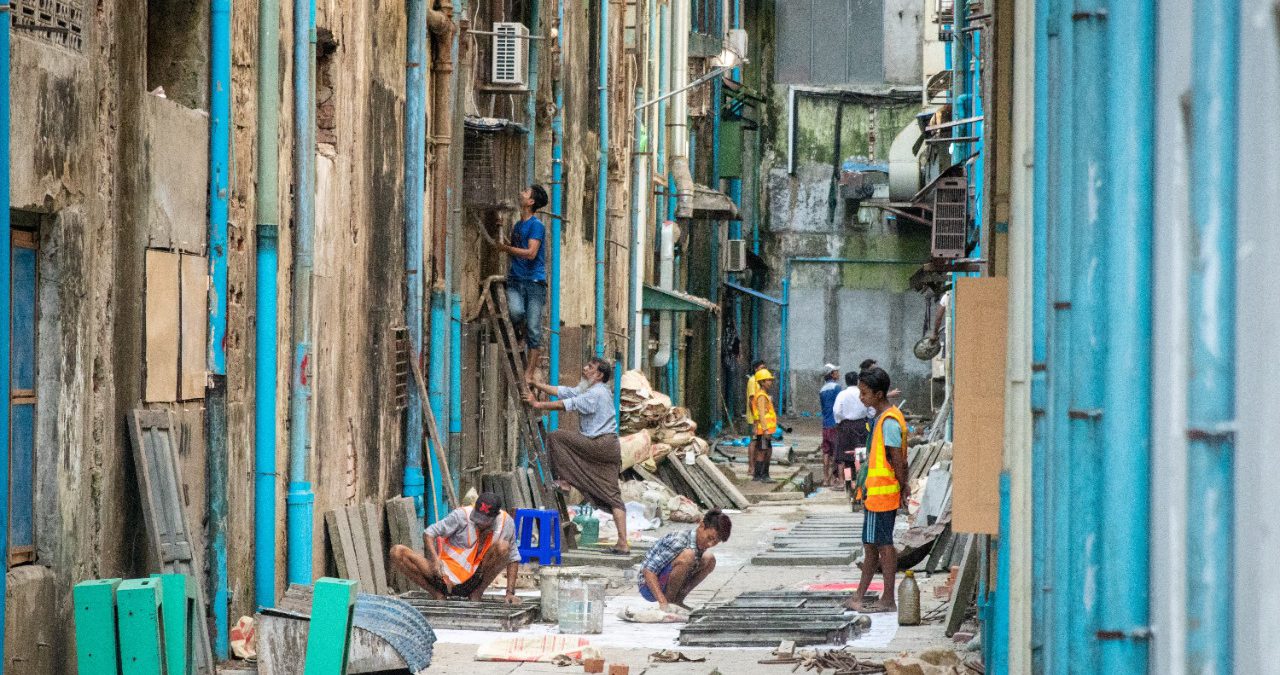
Keep up with our latest news and projects!

Asian cities throughout the region continue to grow rapidly. Real estate development is in overdrive to give space to this rapid growth and all the mouths to feed. Often this results in large commercial developments, top-down planning and complicated infrastructure projects. Cities cannot keep up and in many cases they end up with an overpopulated urban environment with a lack of public space and open green areas, low levels of hygiene, and easy spread of disease. It seems that urban planning in Asian cities frequently overlooks the needs of the community and lacks a human-centred approach.
This was not always the case. Across many countries in South-East Asia (Indonesia, Malaysia, Brunei, Cambodia, Singapore) communities were often organised in small urban settlements, called Kampong (or Kampung). They were traditional villages with a few shacks and a very community-centred way of living. Unfortunately economic development and urbanisation have almost entirely replaced them. In Singapore for instance, there’s only one left and in the other countries they are now generally considered as slums.
The need for optimisation of urban space saw the rise of another common urban development in the region: that of ‘The Shophouse.’ These buildings were generally two to three storeys high, built in contiguous blocks with common party walls. They functioned as narrow, small-terraced houses with commercial activities at the ground floor and a residential area above. The need for a service access in the rear part of these buildings created a network of narrow alleys or back lanes in between two rows / blocks of shophouses. These alleys were once very popular for all kinds of commercial and street activities like outdoor barbers or gambling.
Similar urban settlements existed in the northern Chinese cities like Beijing, where neighbourhoods were characterised by narrow alleways called ‘hutong’, formed by a series of traditional courtyard residences connected to each other. The hutong were initially occupied by single families and after subdivided and shared by many households.
Unfortunately these traditional, community-centred urban settlements have made way for new high-rise developments and small alleyways or spaces in-between have been left abandoned and under-utilised. The consequences are large: loss of identity, loss of culture, overpopulation and lack of space. People who relocate to brand new (high-rise) developments have difficulties to connect to the surroundings and experience a low sense of place. The demolition of entire districts together with the rapid influx of foreign citizens and top-down policies have made led to communities feeling disconnected from public space and a lack of ownership.
Capitals and tier one cities are suffering more because they were the first to be affected by rapid urbanisation processes, at a time when they were mainly focused on economic growth and were typically finding short-term solutions for overpopulation issues. Second tier cities in countries like Indonesia, India and China have better chances to avoid the mistakes and wrong decisions made by the tier one cities.
For instance, investing immediately in public transport and in alternative ways of mobility would allow them to design more human-centred cities. By championing ‘car-lite’ solutions, they can immediately convert roads and parking lots into public spaces for people. This needs a shift in awareness.
In today’s harsh urban environments many people have a thirst for space; a space outside their cramped apartments. A space where they can thrive, mingle and be creative. Spaces that boost the existing qualities so unique to Asian cities. Residents now flee into air-conditioned spaces in shopping malls as the available public space does not meet the needs. Luckily, even in these dense environments, space is available. As buildings and infrastructure occupy only a fraction of land in cities, there is the space ‘in-between’.
This includes unused land underneath bridges or flyovers. Or forgotten land, filled with trash or deemed too dark and scary to enter. Do these spaces have the potential to be reimagined, to become stunning by distinguishing its specific character, or to uplift communities in the vicinity? As land value soars, and space is scarce, it is easy math. One just has to find these places and envision their potential. While this takes courage, the cases in this chapter show that it can be done.
These projects are sometimes catalysed by a visionary mayor (like in Bandung), but are often down to mischievous urbanites in search of space for some kind of need, not knowing what they are up against, but succeeding with a mix of perseverance, positive thinking and vision (Yangon & Mumbai). Unlocking an unmet need in the community — unmet, and perhaps unknown by the community itself. The initial dream might have been the key connector, but the people — both those who took part in the programming and the community members who got involved — make it happen (Petaling Jaya). The relationships people and organisations form with one another through rejuvenating underused spaces are invaluable to make cities work for people (Singapore). And sometimes, giving face to these forgotten spaces can even help to stop top-down urban planning (Hong Kong).
This is what happens when residents or local organisations take control to activate underused spaces. These cases serve as an example and can help to catalyse a much needed cultural and mental shift of urbanites towards their city, their neighbourhood. They remind us that it is possible to bring back the sense of belonging to a community, even if for the last thirty years it has been neglected in favour of economic growth. They help to realise that all this is possible — even within these harsh, dense urban environments. Armed with this knowledge, we must encourage more and more people to take ownership of their cities, to restore the green and community-centred spaces so often removed in the past decades.